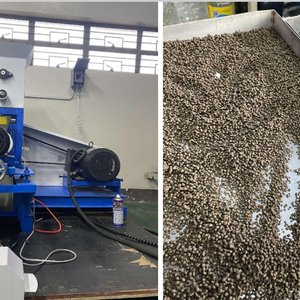GAFTA FIN fishmeal and fish oil Sustainability Dossier published
FIN, the Fishmeal Information Network, has this week published its Dossier 2008 – the latest edition of its Annual review of the status of the feed grade fish stocks used to produce fishmeal and fish oil for the UK market.
The Dossier is a compilation of factual and independent information, including latest available stock assessments from the United Nations Food and Agriculture Organisation and the International Council for the Exploration of the Sea (ICES) which assess world and North East Atlantic/European stocks respectively.
According to UN FAO, most buyers of fishmeal and fish oil or products from animals and fish fed fishmeal and fish oil, depend on the annual FIN Dossier for information on what stocks are sustainable, or not.
The new Dossier shows that in 2007 38% of the fishmeal used in the UK was produced from trimmings from food fish processing, 28% from the world’s largest fishery of any type, the anchovy fishery of Peru; and 21% from blue whiting fished to the west and north of the British Isles by EU countries, Norway, Iceland, The Faeroe Islands, Greenland and the Russian Federation. The remainder is made up of capelin, sand eel, sprat, herring and Norway pout from northern European waters, and jack mackerel from Chile.
There are quotas or Total Allowable Catches (TACs) for all these fisheries which are detailed in the Dossier, together with the other management measures based on precautionary principles and designed to protect stocks. Virtually all feed grade fish is caught using methods which do not disturb the seabed.
Sustainability
The trimmings used by the fishmeal industry would otherwise have to be disposed of with environmental and financial costs.
Turning to the wild catch, in Europe quotas for this year, 2008, are based largely on assessments and catches in 2007. Precautionary closure of the fishery in 2007 was successful in the case of the Norway pout fishery which had recovered enough for TACs to be set for 2008.
A stable sprat stock has enabled the quota to be increased by 15% and the quota for the largest, North East Atlantic, herring stock was increased by 38,000. In April this year – in season checks on the North Sea sand eel stock resulted in the quota being increased from 170,000 tonnes in 2007 to 400,000 tonnes for 2008. However TACs for blue whiting and some herring stocks were reduced as part of the continued drive towards sustainable levels of fishing. The important blue whiting stock was most recently designated by ICES as having ‘full reproductive capacity but being harvested at risk’.
ICES commented that efforts and sacrifices were paying off with certain stocks. It said that, when implemented correctly, reduced quotas and fishing effort translated directly into lower fishing pressure which in turn contributes greatly to the rebuilding of depleted fish stocks. However this statement must be seen against a background of criticism of the effectiveness of fisheries management by the EU and a raft of new and proposed measures to improve that situation.
The South American stocks of anchovy and jack mackerel have not been assessed by UN FAO since 2006 when they were designated ‘fully fished’. Meanwhile the Governments of Peru and Chile, advised by their fisheries research institutes, continue with what they describe as a responsible and precautionary approach to their feed fisheries including strict catch limits, closed seasons and independent monitoring and recording of all landings. Details are in the Dossier.
There has been considerable focus in recent years of the sustainability of feed grade fisheries. In a separate section the Dossier also presents extracts from contributions to the debate from many organisations including environmental NGOs, published papers by fisheries and environmental scientists, and fishmeal and aquaculture trade organisations.
For example, during the last year UN FAO has made progress on guidelines for sustainable aquaculture; the International Fishmeal and Fish Oil Organisation - which represents about 60% of world production - announced the development of its own Code of Responsible Practice which should come on stream in 2009; an EU Parliament report proposed fishmeal as part of the answer to the discard problem; and the Marine Conservation Society has announced its Principles and Criteria for Sustainable Fish Farming with a section on feed.







